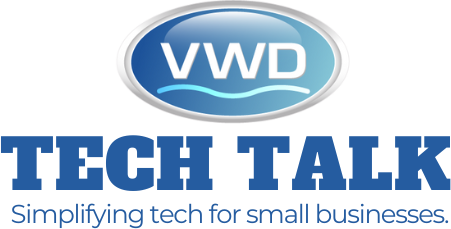The Internet has grown to another level of highness, and every business is on it. In the vast landscape of the Internet, having a great website is just the tip of the iceberg.
To truly stand out and be discovered by your potential audience, optimizing your website for search engines is crucial. Welcome to the world of Web Design for SEO—a realm where aesthetics and functionality meet visibility and accessibility.
Understanding SEO Basics
Let’s start by grasping the basics before we dive into the marriage of web design and SEO. Search Engine Optimization (SEO) revolves around enhancing your website’s presence on search engine pages (SERPs). A well-designed website becomes the canvas upon which these SEO principles are applied, amplifying its discoverability.
Responsive Web Design (RWD)
Responsive Web Design (RWD) isn’t just a trend; it’s a necessity in the digital era. RWD ensures that your website adapts seamlessly to various devices, providing an optimal viewing experience.
Not only does this enhance user experience, but it also positively impacts SEO by avoiding penalization for non-mobile-friendly websites.
Creating a Clear and Intuitive Structure
A well-organized website structure is the backbone of user experience and SEO. It involves arranging content logically, making it easy for visitors to navigate through your site. An intuitive structure helps search engines crawl and index your pages efficiently, enhancing visibility and ranking potential.
Importance of Internal Linking
Internal linking bonds various pages within your website, aiding in the distribution of page authority and establishing hierarchies. By strategically linking relevant content, you guide users and search engines to important pages, boosting SEO value and improving the user journey.
Significance of Speed for SEO
User experience and search rankings are significantly impacted by page loading speed. Search engines favor fast-loading websites as they provide a better experience for users. Slow sites can result in higher bounce rates and lower rankings, emphasizing the need for optimization.
Techniques to Improve Loading Time
Reducing server response time, optimizing images, leveraging browser caching, and minimizing unnecessary scripts are among the many techniques used to enhance page speed. Implementing these optimizations ensures a snappier experience for users and better SEO performance.
Mobile-first Indexing
Search engines prioritize indexing and ranking mobile versions of websites due to the rise in mobile usage. Designing a mobile-responsive site becomes imperative to cater to this growing user base and maintain visibility in search results.
Best Practices for Mobile SEO
Mobile SEO focuses on responsive design, mobile-friendly content, and fast loading times on mobile devices. It involves optimizing for smaller screens, touch interfaces, and voice search, aligning with user behavior and search engine requirements.
Importance of Engaging Content
Compelling and informative content captivates visitors and keeps them engaged. Engaging content not only draws users but also encourages sharing and linking, contributing to improved SEO performance.
Role of Headings, Bullets, and Visuals
Proper use of headings, bullet points, and visuals enhances readability and user experience. Clear headings and organized content structure aid both users and search engines in understanding your content’s relevance and hierarchy.
Alt Text and Its SEO Relevance
Alt text provides descriptive text for images, aiding accessibility and offering context to search engine crawlers. Optimizing alt text with relevant keywords enhances the image’s SEO value and improves overall website visibility.
Compression and File Formats
Faster loading results from compressing images without compromising quality. Choosing suitable file formats, such as JPEG or PNG, contributes to efficient image delivery without sacrificing visual appeal.
Schema Markup
Search engines overview your content better with schema markup. Implementing schema can lead to rich snippets in search results, increasing visibility and click-through rates.
Implementing Schema for Better Visibility
Applying structured data markup to your content, such as product reviews, events, or FAQs, allows search engines to display more informative results, attracting user attention and potentially improving site traffic.
Structure and Keywords in URLs
Both users and search engines benefit from optimizing URLs with relevant keywords and ensuring a clear, descriptive structure, which helps improve SEO.
URL Best Practices
Short, concise, and easily understandable URLs are favored by both users and search engines. Including keywords and avoiding unnecessary parameters enhances user experience and click-through rates.
Importance of Meta Tags and Descriptions
In search results, meta tags provide concise information about web pages. Writing compelling and optimized meta tags can improve click-through rates and search rankings.
HTML Improvements
Maintaining clean and error-free HTML code ensures smooth crawling and indexing by search engines. Properly structured HTML contributes to a well-optimized website.
Trust Signals for Search Engines
Implementing HTTPS (Hypertext Transfer Protocol Secure) establishes a secure connection between the user’s browser and the website, instilling trust and security, factors that search engines consider in rankings.
Impact on Rankings
Websites with SSL certificates and secure connections through HTTPS are prioritized by search engines. The adoption of HTTPS positively influences rankings, ensuring a safer browsing experience for users.
Connection Between Social Signals and SEO
Likes, shares, and comments indirectly impact SEO by increasing brand visibility, driving traffic, and possibly influencing search engine algorithms.
Incorporating Social Buttons
You can indirectly boost SEO efforts by including social sharing buttons on your site, encouraging visitors to share your content.
Continuous Improvement Approach
Regularly monitoring website performance using analytics tools allows for data-driven decision-making. Continuous improvements based on these insights ensure that your site remains optimized for SEO and user experience.
Tools for Tracking Performance
Utilizing software like Google Analytics and Search Console helps in analyzing website metrics, user behavior, keyword performance, and technical issues. These insights aid in refining SEO strategies and optimizing web design elements for better visibility.
Final Thoughts!
In the dynamic realm of web design for SEO, every element plays a significant role in enhancing visibility and ranking on search engines. Combining a user-centric approach with SEO best practices ensures a website’s success in the competitive online landscape.
Venice Web Design can help you with customized solutions at pocket-friendly rates. We have a skillful crew of SEO experts who know how to tackle all types of search engine presence.
Our solutions also include website design and development, content creation, and digital marketing. We guarantee improved search engine rankings and conversions. Give us a call today!
FAQs
Why is Mobile Optimization Crucial for SEO?
Mobile optimization aligns with user preferences and search engine algorithms, impacting rankings and ensuring a seamless experience across devices.
How Does Schema Markup Benefit SEO?
Schema markup provides additional context to search engines, leading to enhanced search results and potentially higher click-through rates.
What Role Do Internal Links Play in SEO?
Internal linking distributes authority throughout a website, guiding both users and search engines to key pages and boosting SEO value.
Why is HTTPS Important for SEO?
HTTPS establishes a secure connection, enhancing user trust and positively influencing search engine rankings.
What Tools Can I Use to Monitor Website Performance for SEO?
Google Analytics, Search Console, and various SEO tools provide insights into website metrics, user behavior, and technical issues, aiding in optimizing for better visibility.


